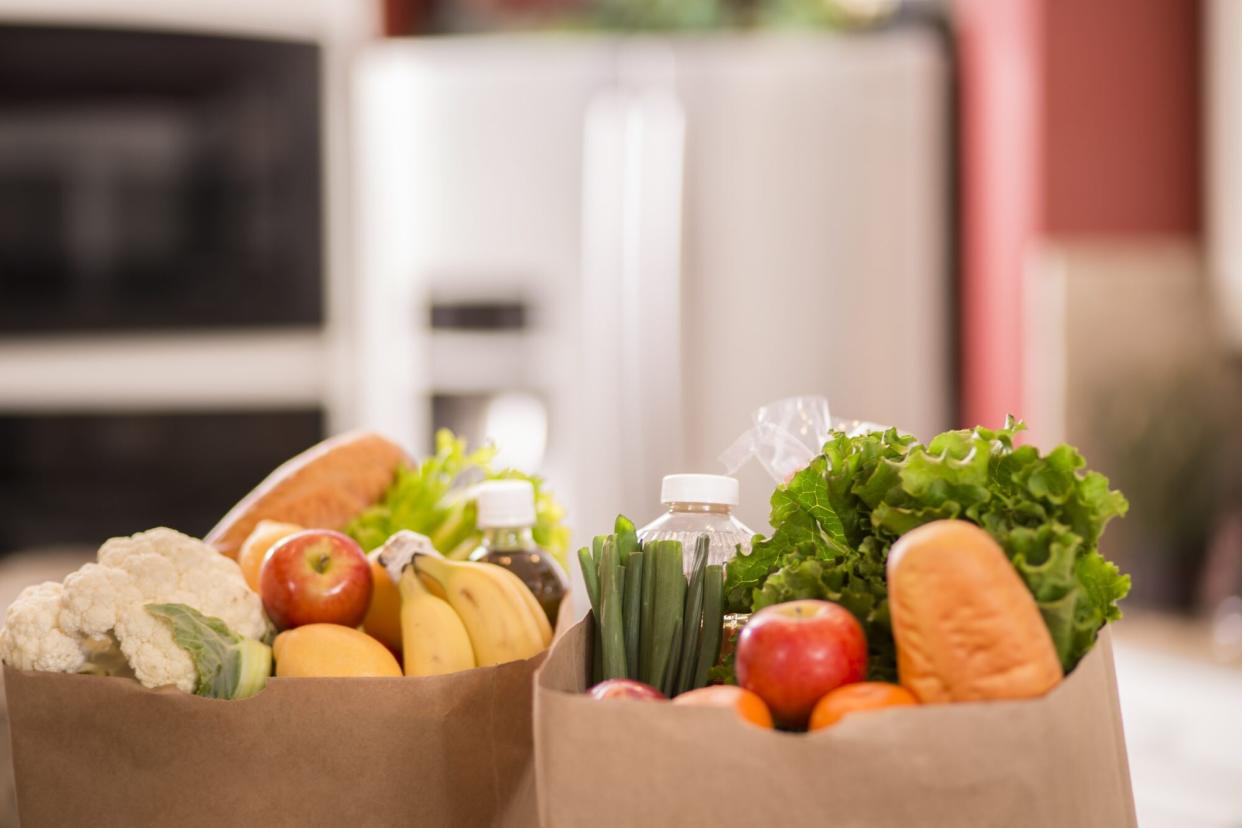How To Make The Most Of Your Groceries

Getty Images
TABLE OF CONTENTS
On This Page
Plan Meals Among Double-Duty Ingredients
Shop Your Pantry While Making Your Grocery List
Freeze the Extras for Later
Use Up Every Last Bit
Grow Your Own
Get Creative with Leftovers
Become a Fan of Rotisserie Chicken
Being smart about how you shop and cook can ensure that you're making the most of your grocery investment. Maximizing ingredients will help you save money in the long run, and reduces food waste, which is always a sound choice for the environment. Use these ideas to help you get started making the most of your groceries.
Plan Meals Among Double-Duty Ingredients
While planning your dinners for the week, choose meals that use similar ingredients so you can use up the entire package of ingredients. This works especially well for ingredients that can fit a couple of different flavor profiles. For instance, cilantro adds fresh flavor to tacos, and the rest can be used for Asian rice bowls. If you bought a carton of buttermilk to make biscuits, find other ways to use up the rest in recipes like dressing, fried chicken, or mashed potatoes. Thinking about versatile uses for ingredients will ensure that perishable ingredients can be used up before they go bad. Plus, you can take advantage of BOGO or bulk packages of pantry items knowing that you won't waste the excess.
Shop Your Pantry While Making Your Grocery List
Are you one of those people who finds that your fridge and pantry are overflowing, yet there's still nothing to make for dinner? You'll save money (and free up kitchen real estate) by starting your meal planning with a look in the fridge, freezer, and pantry. One of our favorite ways of using up random ingredients like frozen leftover chicken and half-filled bags of fresh or frozen vegetables is in a pot pie. Soups, chilis, and grain bowls also lend themselves nicely to a mish-mash of random odds and ends ingredients both fresh and packaged. It's amazing how much money you can save by using up what you already have on hand before buying more food… and this practice will help you get into the habit of using up things before they go bad.
Freeze the Extras for Later
When you find yourself with extra fresh ingredients that you know you won't be able to use before they go bad, use your freezer to store them for longer periods. Dairy products like heavy cream can be frozen in a freezer bag or plastic container. Fresh fruit like berries or small pieces of vegetables can be spread on a baking sheet, frozen solid, then transferred to a freezer bag for storage. Chop fresh herbs, portion them into an ice cube tray, top the compartments off with water, and freeze them solid before transferring to a freezer bag. Tomato paste and canned chipotles are two canned ingredients that often aren't completely used up in a recipe. You can spread a piece of waxed paper on a plate, dollop out tablespoon-sized portions of the paste or chiles in their sauce, and put the plate into the freezer. When they're frozen solid, peel them off the waxed paper and store them in a freezer bag.
Use Up Every Last Bit
When buying fresh produce or meat, get in the habit of using up every little bit of your purchase. This might mean using the carcass from your roast chicken to make homemade chicken stock, or sauteeing the greens attached to fresh radishes for a peppery side dish. It can be a fun challenging to figure out how to truly stretch your groceries, whether it's saving parmesan rinds to simmer in soups and stews for an umami hit, or making croutons or breadcrumbs with the rest of a fresh baguette that's gone stale.
Grow Your Own
Buying a pack of fresh herbs every time you need a tablespoon of thyme or a garnish of fresh basil can add up… and you probably don't even need the entire package. Many produce departments have small potted herb plants that don't cost much more than the clamshell package containing a few sprigs. Next time you need herbs, buy one of these plants instead and keep it on your kitchen windowsill where you'll remember to water it frequently. It's so convenient to be able to snip off a few sprigs any time you need herbs. You can also regrow leeks, lettuce, celery, and green onions from the roots in a shallow dish of water.
Get Creative with Leftovers
Keep leftovers from dinner front and center in your fridge, and make a plan to use them up in interesting and delicious ways. Leftover chili or stew can be topped with a layer of cornbread or biscuit and baked like a casserole, while last night's Chinese food can be tomorrow's stir-fried rice. Pieces of meat can be chopped up and mixed with other ingredients for stuffed squash (This recipe also uses day-old cornbread!).
Become a Fan of Rotisserie Chicken
Rotisserie chicken is often one of the best values at a supermarket… especially if you belong to a warehouse club like Costco where the chickens are only around $5 and weigh in at around 3 pounds. Serve it as is with some side dishes, or use it as a starting point for a wide range of chicken recipes… just don't forget to use the bones to make a flavorful stock when you're finished!

